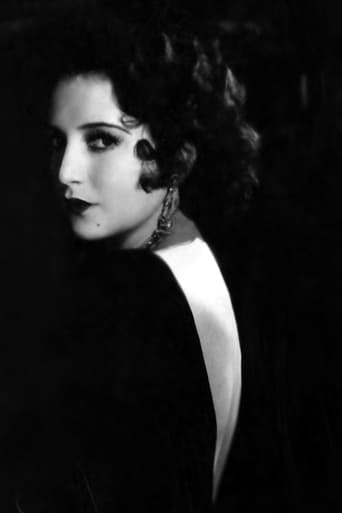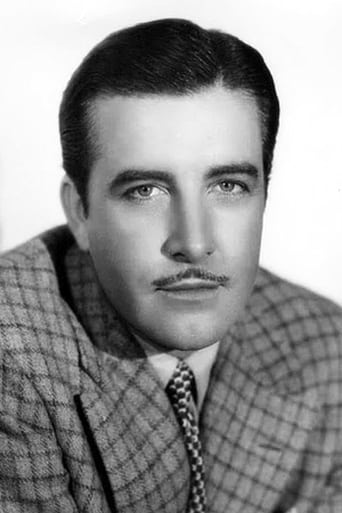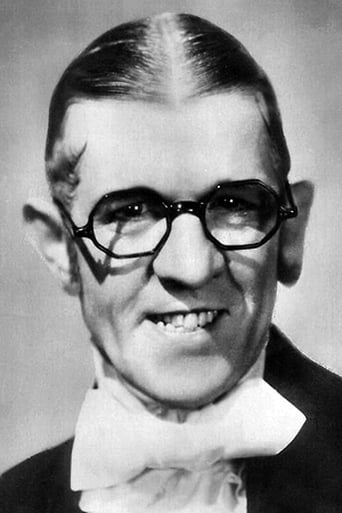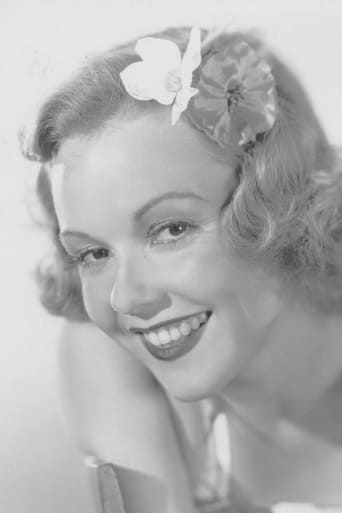Mjeteconer
Just perfect...
MamaGravity
good back-story, and good acting
Odelecol
Pretty good movie overall. First half was nothing special but it got better as it went along.
Leoni Haney
Yes, absolutely, there is fun to be had, as well as many, many things to go boom, all amid an atmospheric urban jungle.
MartinHafer
For a 1929 musical, "Rio Rita" is pretty good. However, early talkie musicals stink--so this isn't a glowing endorsement. Like too many of these films, this one is extremely stagy, the singing is god-awful by today's standards and the film is dated beyond the capacity of most viewers to stick with the movie. So I am saying the film is terrible, right? Well, no. It is well worth seeing if you are very familiar with films of the era or if you are a huge fan of early comedies, as it's the first film featuring Wheeler and Woolsey, a duo who achieved a lot of success in the 1930s but who are practically forgotten today.The film is about some Mexican outlaw named 'The Kinkajou'--an odd name since a kinkajou is a very unassuming looking little creature that kind of cute. The bandit, a federal agent and the Kinkajou's sister all come together in Mexico. However, apart from this main plot are Wheeler & Woolsey who are almost like an entirely different movie within the movie. Wheeler is a guy in love with his usual on- screen love, Dorothy Lee, though this is complicated since he is technically STILL married. Woolsey is his lawyer. When it turns out the wife (who Wheeler THINKS he's legally divorced) has come into a fortune, Woolsey makes a play for her!The characters sing and sing and sing in this film. There is definitely too much singing and it's made worse since so much of it is dated and dull--and almost operatic in style. Combined with the original Ziegfeld song and dance numbers, it's all very hard to take. Plus, the songs are so omnipresent that they really get in the way of the plot--and often derail the comedy. The film also would have greatly benefited from getting rid of the whole Kinkajou plot!Overall, this is an odd little curio that is of interest to nuts like me who want to see Wheeler & Woolsey in their first film. Otherwise, you need to have a lot of patience to bother with this dated old musical.FYI--Some of the film is in color--very nice looking for 1929. It's obvious that RKO was really pulling out the stops in their first film. However, I assume the color prints for some of the reels were lost, so the film goes back and forth between the two.
GManfred
"Rio Rita" is a filmed stage play with a couple of outdoor scenes tossed in. Taken just as a movie it would be a near-flop, but as a historical document it is an essential part of Hollywood's rich past of musical motion pictures. It is also a rare look at a production overseen by Broadway showman nonpareil Florenz Ziegfeld, which most of us have never seen but can only read about.Presumably, the spectacle's the thing with a Ziegfeld show, because Rio Rita's book is just plain goofy and as entertaining as oatmeal. The story is absurd and wanders about for 103 minutes and is saved only by musical interludes and by the comedy team of Wheeler and Woolsey, who are forced to work with some unfunny material but bring much-needed energy to the show. The music is very good, even though my DVD from Warner Archives collection omits the "Kinkajou" song and dance number. I have it on a CD recording and sounds almost like the show's best number - but I can't tell, since it's been left out.Bebe Daniels was excellent but I found John Boles a lumpen and paunchy Texas Ranger, but with a good singing voice. The overall look of the show was somewhat primitive and static, except for the last 20-30 minutes which was shot in Technicolor. I gave the film a rating of 6, which I think is passable (historically speaking) - if you are a serious film fan you should really check it out and make up your own mind. It's what makes horse racing.
nknerr
What a lot of movie buffs may not be aware of is the surprise and delight that the movie audiences of 1929 felt when they first heard Bebe Daniels's singing voice on the silver screen. By the time sound pictures began to appear, Daniels had already been a major silent film star for years, most notably headlining in romantic comedies for Paramount. She was quite popular with audiences, and she was considered a real beauty, too. Yet before the advent of sound, screen audiences (for the most part) didn't know what her voice sounded like... They could only imagine. So at a time when the arrival of sound sometimes killed the careers of heretofore popular movie stars, many so-called "hot" personalities found their personas diminished on the talking screen. Not so with Daniels. No matter what people might have been expecting before the lights went down and the sound came on, as it turned out, in "Rio Rita", her singing voice was nothing short of a sensation. Teaming her with the incredibly handsome John Boles was a nice bit of casting, too, because he too was blessed with a wonderful singing voice. Their "duet in counterpoint" at the beginning of the film (he sings the title tune while she sings "River of My Dreams") must have been a revelation, and one can almost imagine the theatre audiences swooning when it was first heard in 1929. So no matter what others may tell you about this "Rita", the thing to keep in mind is that with almost all of these early talkies, the viewers today who will appreciate them the most are those who can project themselves back in time when they watch them.
kos-3
Though Rio Rita has a big reputation among aficionados, I think it's probably due more to its success as a stage vehicle than as a film.Nevertheless, for those who are interested in historical films, I feel Rio Rita serves as a good example of the kinds of obstacles that faced early film makers and actors. As the sound and music was recorded live, there are a number of mistakes, slips and awkward moments. But rather than detract, I think it's interesting to see how the actors and staff negotiated these difficulties. Particularly in the reprise of "Sweetheart We Need Each Other" you can see Dorothy Lee struggling to follow the conductor while Bert Wheeler keeps on distracting her, while Helen Kaiser is clearly trying to follow Lee but both Woolsey and Wheeler keep on getting in her way.Then there are moments that, because the recording was done live, are just over the top. The most hysterical moment has got to be when, after 5 minutes of singing and tap-dancing in a single take, and then after a series of double summersaults, Bert Wheeler literally jumps on Dorothy Lee's back and rides piggy-back while she resumes singing. Wow!And of course, with so few surviving films with two-strip Technicolor, it's always interesting to see how early film makers took advantage of it.





